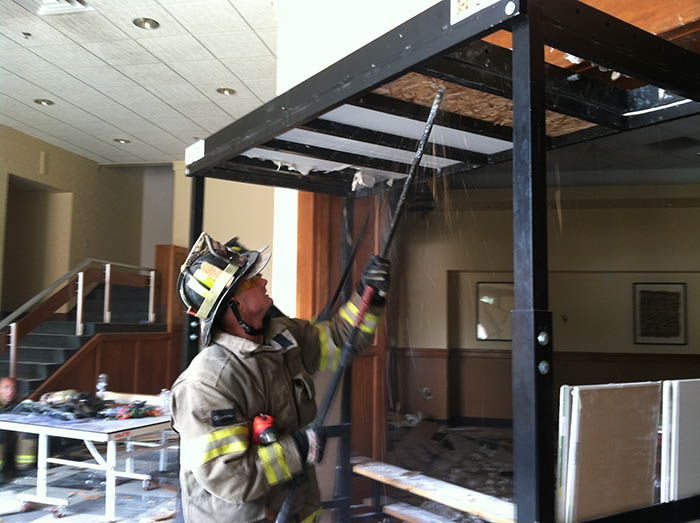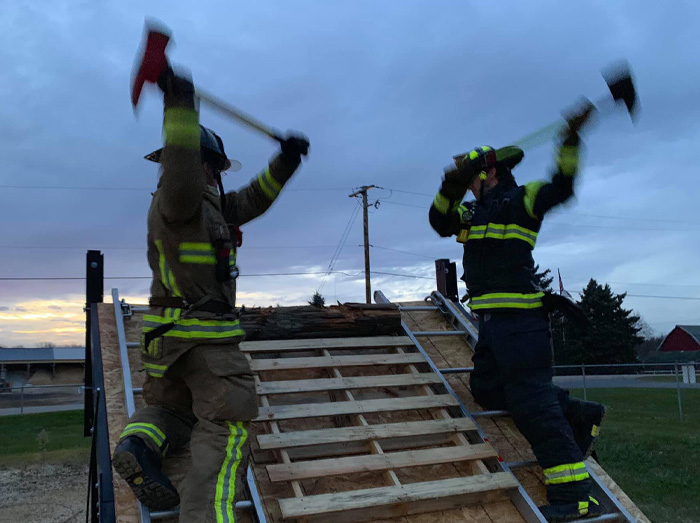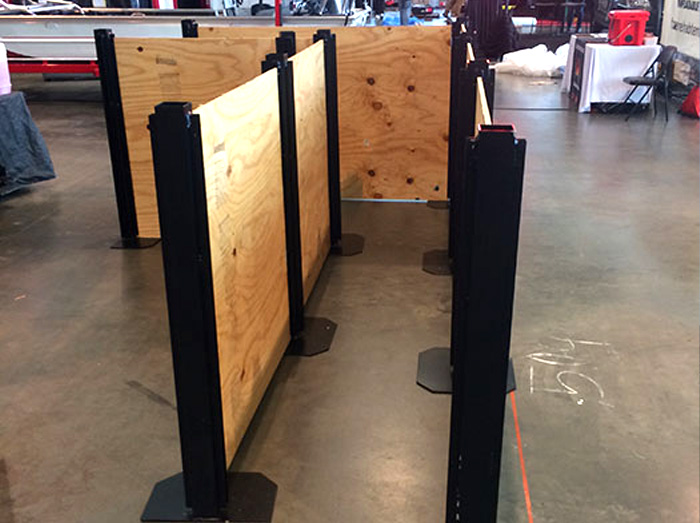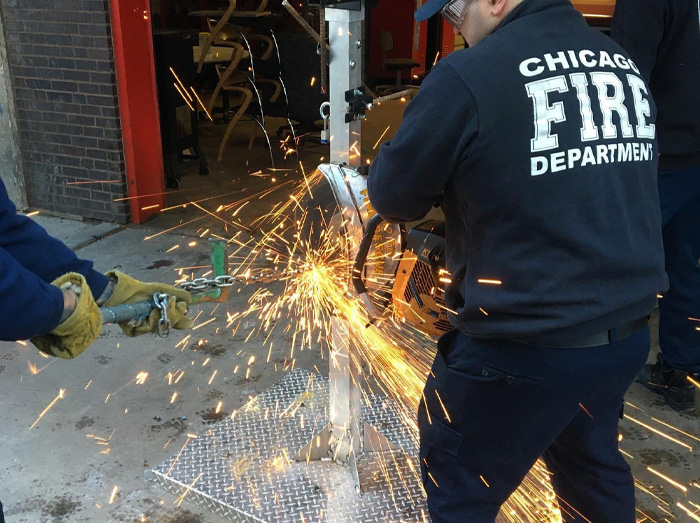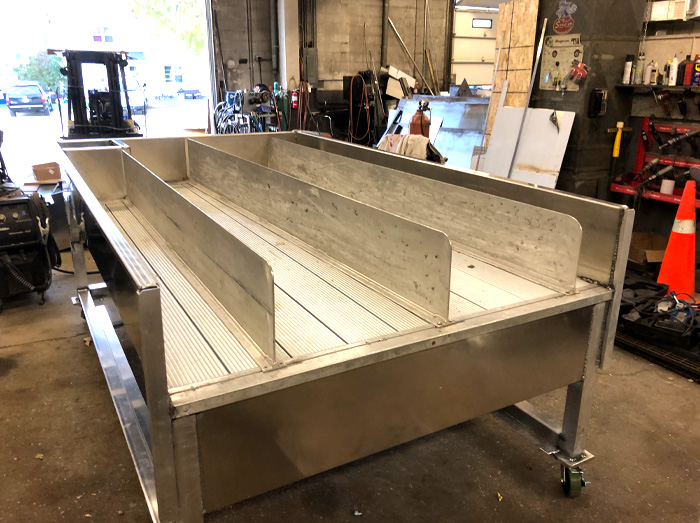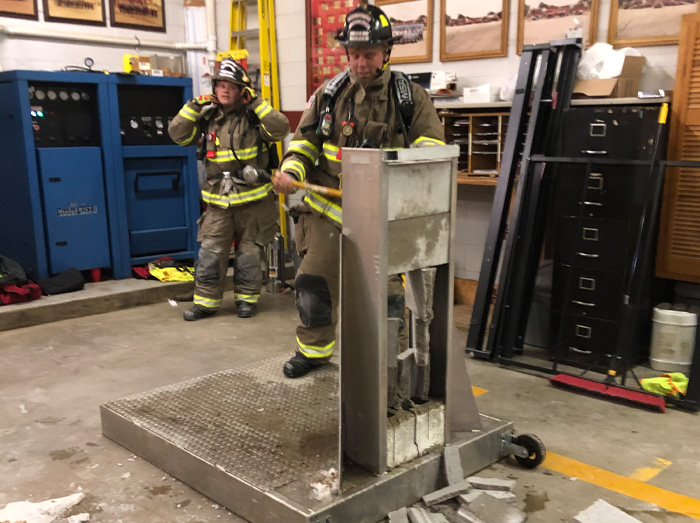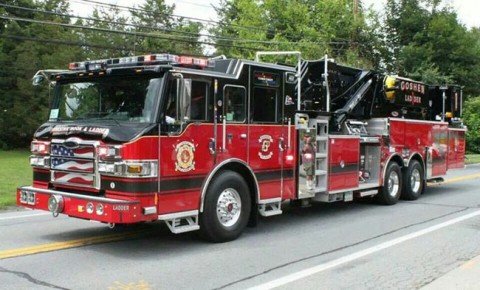King Training Innovations
1st Due Truck, Know the role.....
By Jim McCormack Published Thursday, April 1, 2010 | From the April 2010 Issue of FireRescue
One of the things that’s happened in the last 10 or so years is that the emphasis on truck company operations and the skills it takes to actually perform them have really exploded—more awareness, more knowledge, more training. During this time, a couple things have remained constant: the importance placed on the knowledge and skills it takes to get the job done varies with each individual firefighter; and solid truck company skills, performed at the right time, make things easier on the fireground. Your Individual Situation Where You Are: In all honesty, it really doesn’t matter where you are in terms of your city, state or region, truck work is truck work! The skills involved include forcible entry, laddering, search, ventilation, overhaul and more. East Coast, West Coast or somewhere in between, the basics are still the same. If you’re faced with a locked entry door on the fireground and you make your way to the other side, it’s called forcible entry (in California, Indiana, Massachusetts and everywhere else). The Size of Your Department: A big misconception in the fire service, when it comes to the fireground, is that the size of the department changes what needs to be done. That’s really not true. The size of the department changes what can be done in a certain time period (based on staffing, equipment and resources), but it takes the same skills to put a fire out in a small or large department.
Department Approach to Truck Work: Let’s face it, there are engine-based departments and truck-based departments and a whole lot of departments that are somewhere in between. Some departments don’t have a ladder truck, but they still perform truck work on every fire—the tools are simply carried on the engine. Other departments send multiple ladder trucks to every fire, allowing them to split the truck work among multiple companies. It really doesn’t matter what your department’s approach to truck work is (although you may wish it was different), but what does matter is that the department members can perform the skills when the time comes. Prioritizing the Fireground There’s an old acronym that’s used to remember basic truck company skills—LOVERS_U. The letters stand for Ladders, Overhaul, Ventilation, Entry, Rescue (and Search), Salvage and Utilities. What the acronym doesn’t address is the timing of these skills as they relate to the fireground. Whether you respond with a single truck, multiple trucks or no trucks, the timing of truck company operations is determined more by the fireground than by your department’s response type. Looking at truck company work in a two-tiered fashion (first-due and second-due truck operations, or initial and additional truck operations) helps to prioritize what needs to be done, by whom, and in what order. Following is a basic truck company timeline: Perform a truck company size-up Force entry for search and engine operations Perform any immediate rescues (simultaneous with the interior operations if possible) Search Ventilate for the engine company and for the search Ladder for access, egress and ventilation Open up and overhaul for the engine company (including salvage work) Cover the utilities based on need As you can see, there are a lot of jobs that must be performed. What’s more: Many of these jobs need to be performed simultaneously! Factor in the number of people you have, the other jobs that must be performed (engine work) and the actual fireground that you’re faced with, and you can see the importance of having a plan before you start. First-Due Work Don’t be fooled by the title! You may not have a dedicated truck company, but there are certain first-due truck company tasks that must be performed on every fireground. The first tasks that come to mind are truck company size-up, forcible entry, search and rescue, initial ventilation and laddering. Sure, there may be other things that need to be done based on the overall fireground size-up, but these tasks could be considered the responsibilities of the first-due truck company—responsibilities that need to take place at the beginning of every operation. Let’s examine each job. Truck Company Size-Up: Although the overall fireground size-up is important because it gives everyone an idea of what to expect when they arrive, it’s the individual company size-ups that really determine what needs to be done right away. The first-due truck company size-up must determine right away if forcible entry is needed and if there are any obvious rescues. Those two key issues will determine the immediate actions of a couple members of the crew. In addition to those issues, the truck company must size up the search operation so that the primary search can be conducted as quickly as possible. Initial ventilation concerns should also be considered. If the fire has self-vented, then additional ventilation issues can be handled as second-due actions. As you can see, it’s tough to divide the truck company skills that need to be performed into first- and second-due skill sets, but this really has to be done in order to accomplish them. Note: Second-due operations don’t always happen later; they simply aren’t at the top of the priority list right away—and that’s only determined by performing a size-up. (We’ll look at second-due truck company operations in a future article.) What’s important to note here is that if you’re an engine-based truck department (performing truck work off the engine), then this size-up must be done simultaneously with the engine company size-up—the hose stretch, the attack plan and actually putting the fire out. Forcible Entry: First-due forcible-entry operations can be really simple or really complicated, depending on the type of structure and the area in which it’s located. Obviously, the truck company that faces buildings lined with scissor-gates, roll-up doors, fences, padlocks, window gates and bars, and every other imaginable increased security measure must be well versed in difficult forcible-entry operations from the outset. The rest of us need to be just as proficient with these skills but even more proficient at not becoming complacent to the point that we assume we won’t face tough entry situations. But let’s not lose focus: Remember the basics! No matter where you are or what the challenge may be, the basic forcible-entry tools are still the irons (including the hydraulic forcible-entry tool), the K-tool (or a variation) and the power saw. You may also need a sledgehammer, bolt cutters, a ground ladder and even hoseline support, but don’t over-think the problem. If you know the tools it takes and you know how to use them in as many variations as possible, then you should be able to use the tools and apply your crew’s collective knowledge to handle the situation. Proficiency at the skills is really what determines the level of difficulty at this point. Search (and Rescue): Search is done for one of two reasons: to locate the fire and/or to locate (and remove) any occupants. The fire’s location may be obvious if it’s visible from the outside. If it’s not, then determining the location of the fire should be a priority for the search team and the engine company (taking a hit-or-miss approach to stretching the line is a lot of extra work). When it comes to searching for occupants, a quick search size-up will increase both the speed and efficiency of the operation. Where’s the fire? Where are the occupants likely to be (high-profile areas include bedrooms, living areas and areas near exit routes). Where are the conditions worst on the inside? As a general rule, occupants that are closer to the fire area need to be accessed first in order to give them a better chance to survive. With that in mind, there are two locations that should be targeted as quickly as possible—the area directly around the fire and the area directly above the fire. In an ideal situation, both areas would be searched simultaneously. Here’s where the department’s approach to truck operations really starts to impact the operation. If you’re an engine-based truck department and the first crew in is stretching the attack line, then the area around the fire will likely be the first area searched. As many have said before, putting the fire out has saved more lives than any other fireground tactic. Once the fire is knocked down, you may be able to get crews to the area above the fire and then to all of the other areas in the structure. If you’re lucky enough to be part of a department with a dedicated truck company, then both areas may be searched simultaneously—the engine searches the fire area and the truck company searches the higher-profile areas away from the fire. Once the main target areas are searched, then the crews can move to the other areas. Obviously, the more people (crews) you have on the fireground, the more tasks you can accomplish simultaneously and the better the overall operation will go. Remember, if you simply don’t have enough people to perform all the functions, then the functions must be prioritized based on the final outcome desired. Initial Ventilation: When it comes to ventilation, there are all kinds of opinions, debates, theories and even techniques. Regardless, ventilation is still done for two main reasons—for fire and for life. The type of ventilation depends on your position, your function and the fireground. Venting for fire: Through the eyes of the first-due truck company, a self-vented fire means that the engine may be able to make its push without committing a truck member to vent opposite the attack crew (but not always). That’s great because the truck crew can check off one thing to do and can move onto something else. If the fire isn’t self-vented, then initial horizontal ventilation needs to be accomplished so the engine crew can more easily make their way to the fire and extinguish it. They may be able to make it without the vent, but it will be a lot more punishing on them (and everyone else on the inside) during the process. Venting for life: Venting to assist the search operation (and interior operations) is also a big part of the first-due truck company’s job. Venting additional windows during the search helps lift more of the smoke environment, which may buy any trapped civilians a little more time to breathe and allow searching firefighters to continue the search. Without venting, the conditions will continue to build and the likelihood of finishing the search will decrease. Additional ventilation can be dealt with as part of the second-due truck company’s responsibility. There may be a few times that ventilation is the highest priority of the first-due truck, but we’ll leave that for another day. Laddering: Laddering is one of those tasks that seems like there just aren’t enough people to get them thrown. It’s not so much that there aren’t enough people; it’s simply a matter of multi-tasking when you arrive. Ladders save firefighters’ lives—maybe not on every fireground, but there’s always that potential. Throwing ladders is a basic skill. Carrying a ladder (with tools) is a basic skill. Carrying a ladder to the fireground and throwing the ladder before moving on to the next task are things that can easily be done. Taking a few more seconds at the beginning of the operation for laddering duties may mean the difference between making a rescue, providing additional access or even allowing another firefighter to get out of a tough situation. Know your ladders. Know what you carry on your apparatus and what’s available on the other apparatus on the scene. Know your limits: What size ladder can you carry by yourself? What size ladder can you throw by yourself? Can you really afford to take multiple trips back and forth to the apparatus when faced with a difficult fireground (and multiple rescues)? Putting It Together Sometimes we spend so much time learning the actual hands-on skills that we forget to learn about how the skills fit into the big (fireground) picture. Achieving success on the fireground is a combination of knowing how to perform, why to perform and when to perform. Whether you’re an officer or a firefighter, it’s your ability to apply the skills that are needed to the fireground you’re working on that will make you, your crew and the actual fireground safer. Next time, We’ll talk about second-due truck company operations.
When you subscribe to the blog, we will send you an e-mail when there are new updates on the site so you wouldn't miss them.


